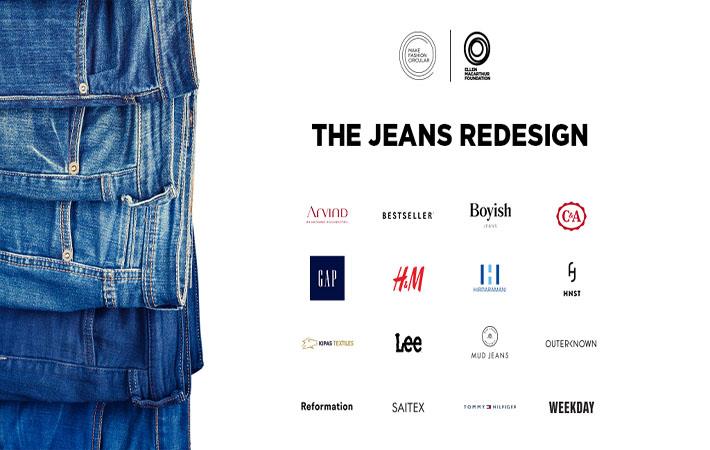The Ellen MacArthur Foundation’s Make Fashion Circular initiative has framed guidelines for producing jean which set out minimum requirements on garment durability, material health, recyclability, and traceability. The guidelines are a joint effort by more than 40 denim experts from academia, brands, retailers, manufacturers, collectors, sorters, and NGOs.
Based on the principles of the circular economy, the Jeans Redesign Guidelines will work to ensure jeans last longer, can easily be recycled, and are made in a way that is better for the environment and the health of garment workers.The Ellen MacArthur Foundation's Make Fashion Circular initiative has framed guidelines for producing jean which set out minimum requirements on garment durability, material health, recyclability, and traceability. The guidelines are a joint effort by more than 40 denim experts from academia, brands, retailers, manufacturers, collectors, sorters, and NGOs.#
Participants to date include Arvind Limited, Bestseller (through the Vero Moda brand), Boyish Jeans, C&A, Gap, Hirdaramani, H&M Group (through the H&M and Weekday brands), HNST, Kipas, Lee, Mud Jeans, OuterKnown, Reformation, Sai-Tex, Tommy Hilfiger. The guidelines have been endorsed by clothing collectors and recyclers Bank and Vogue, Circular Systems, Evrnu, Hkrita, I:CO, Infinited Fibre Company, Lenzing, Recover, re:newcell, Texaid, Tyton Biosciences LLC, Wolkat, and Worn Again. They have also been endorsed by the NGOs Fashion Revolution and Textile Exchange.
The guidelines build on existing efforts to improve jeans production, including the open source guide created following C&A and Fashion For Good’s joint initiative to develop C2C Gold Certified jeans. The Jeans Redesign will drive others to join the project and produce jeans in line with the guidelines at scale. The first pairs of the redesigned jeans will be on sale in 2020.
"The way we produce jeans is causing huge problems with waste and pollution, but it doesn’t have to be this way. By working together we can create jeans that last longer, that can be remade into new jeans at the end of their use, and are made in ways which are better for the environment and the people that make them. This is just the start. Over time we will continue to drive momentum towards a thriving fashion industry, based on the principles of a circular economy," according to Francois Souchet, lead, Make Fashion Circular.
The guidelines have been framed in line with the principle of respect for the health, safety, and rights of people involved in all parts of the fashion industry. These also advocate working conditions improvement in manufacturing globally. Beyond this, the guidelines provide minimum requirements for jeans on durability, material health, recyclability, and traceability.
Jeans should withstand a minimum of 30 home laundries, while still meeting the minimum quality requirements of the brands. Garments should include labels with clear information on product care, the guidelines say.
Jeans should be produced using cellulose fibres from regenerative, organic or transitional farming methods. Jeans should be free of hazardous chemicals and conventional electroplating. Stone finishing, potassium permanganate (PP), and sandblasting are prohibited, these say.
On recyclability, the guidelines mention that jeans should be made with a minimum of 98 per cent cellulose fibres (by weight). Metal rivets should be designed out, or reduced to a minimum. Any additional material added to the jeans, should be easy to disassemble.
In addition, information that confirms each element of the guideline requirements has been met should be made easily available. Organisations that meet the requirements will be granted permission to use the Jeans Redesign Logo on jeans produced in line with the guidelines. Jeans Redesign Logo use will be reassessed annually, based on compliance with reporting requirements. (SV)
Fibre2Fashion News Desk – India
